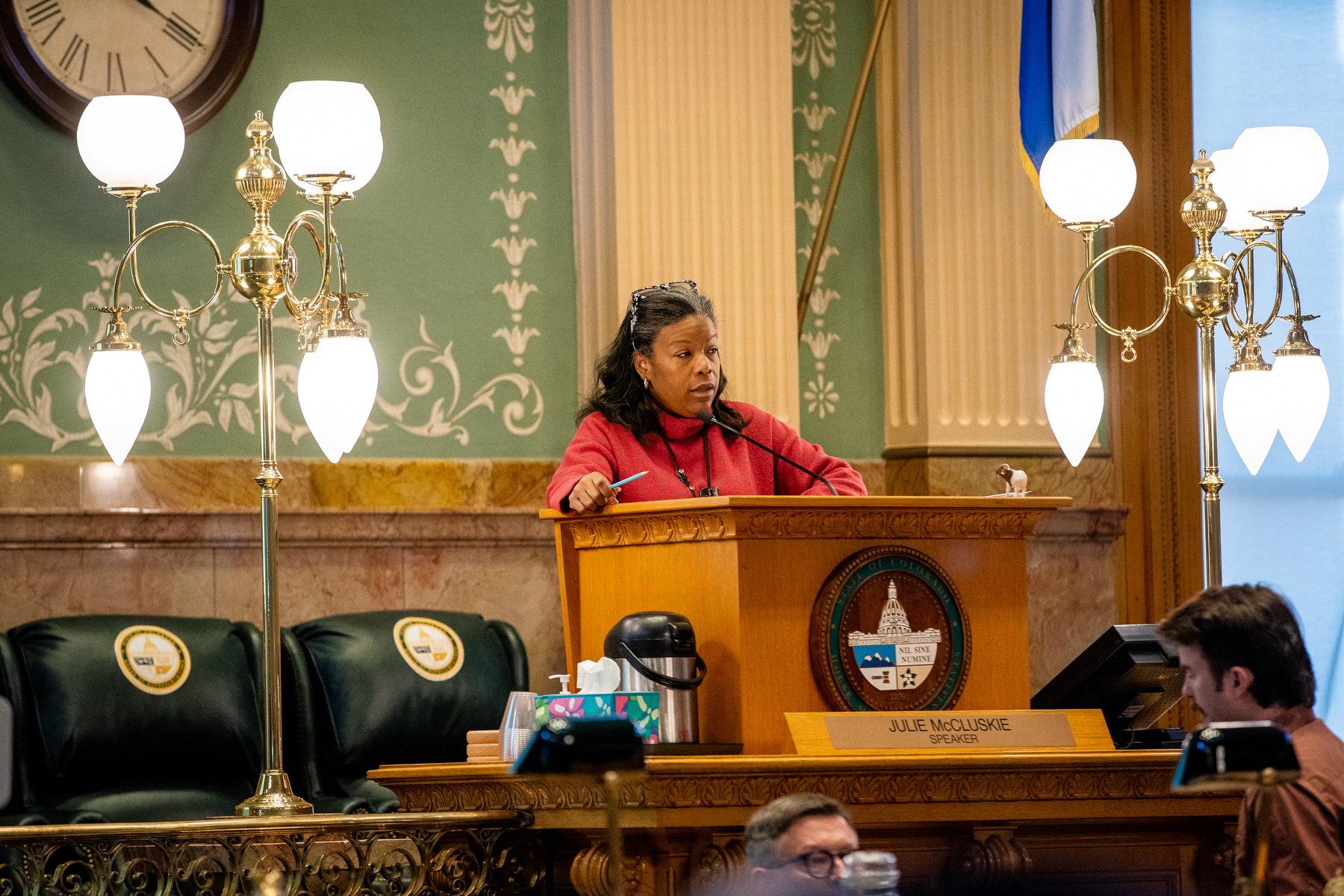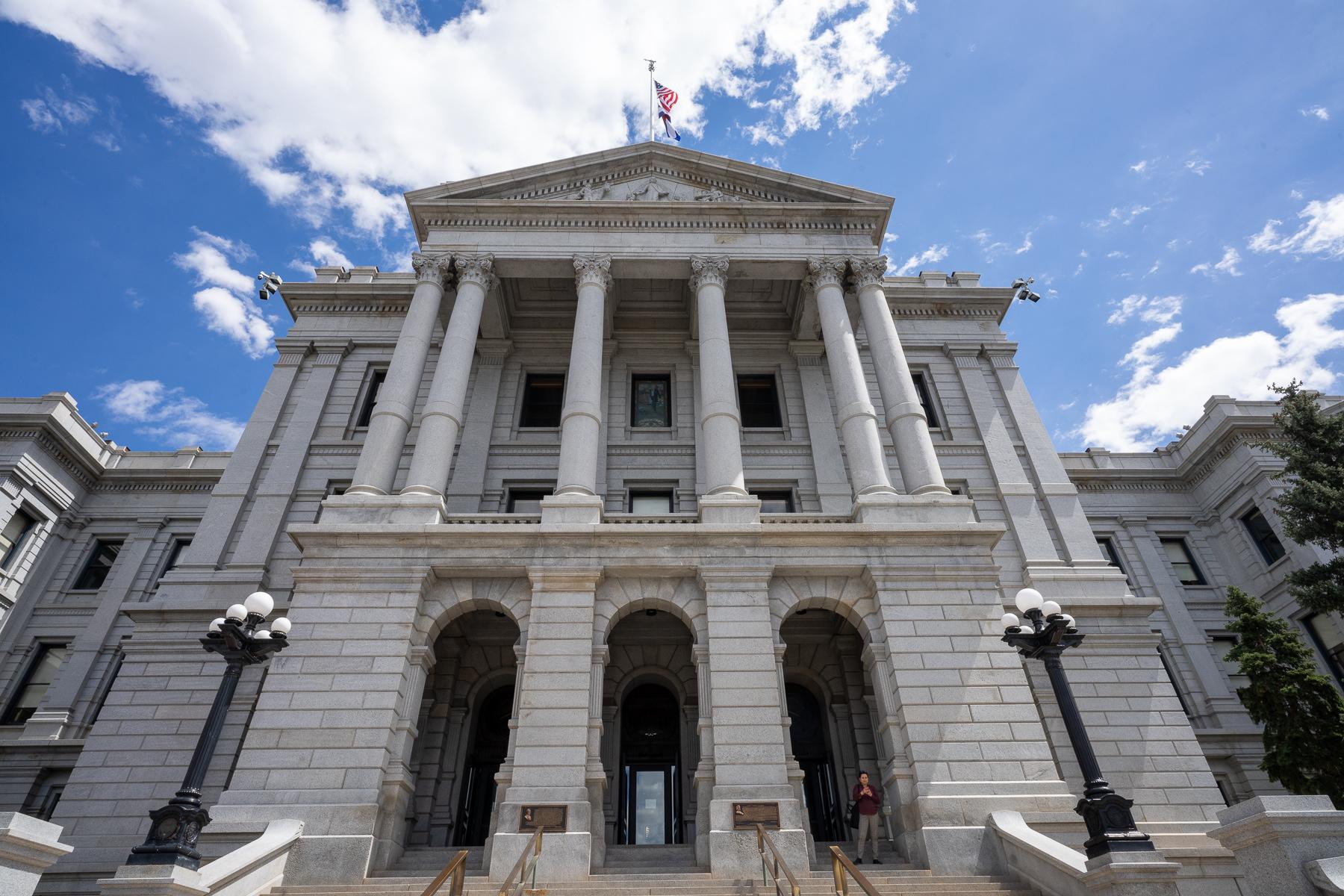
U.S. Immigration and Customs Enforcement may release thousands of immigrants from its detention centers to account for a $700 million budget deficit, according to federal officials who anonymously spoke to the Washington Post.
The internal discussions come after a border bill that would have brought $6 billion in funding for ICE failed in the U.S. Senate. The plan would see ICE detention levels go from 38,000 beds to 22,000, according to the Washington Post.
It isn’t immediately clear how the ICE detention facility in Aurora would be impacted by the internal plan, which officials haven’t confirmed publicly. The facility housed about 900 detainees in December 2023, according to U.S. Rep. Jason Crow’s office, which conducts regular visits to the site and publishes monthly reports on it. January’s count is not yet available.
While a mass release would stir up already heated debates over how local governments should manage new immigrants, they are not new for ICE.
Andrea Loya, the executive director for Casa De Paz, said her organization is the only one in the Denver metro area that meets released immigrants directly outside detention centers. She noted that ICE releases people from custody daily, sometimes letting out as many as 30 immigrants a day. Many choose to leave Colorado following their release.
“We're a very temporary space for them,” Loya said. “Other people that may have other needs, we might handle differently and may need other resources, but for the most part it is really getting people from outside of the doors of the detention center to our place to their next spot, whether that's the airport or a bus station or whatever that may mean for them.”
Elizabeth Jordan, the director of University of Denver’s Immigration Law & Policy Center, said a potential mass release shouldn’t cause any “chaos or disorganization” for local officials. She pointed to moves ICE made during the early years of the pandemic as evidence that the agency can adapt.
“I think that ICE has the resources to process people out of detention in an orderly fashion quickly. We saw that in the COVID pandemic,” she said. “[The number of detainees] was up to 55,000 people on any given night by the end of the Trump administration. Then in 2020 and 2021, under court order, because of the dangerousness of being detained during a respiratory pandemic, ICE significantly reduced the number of people in detention to, I think, as low as about 17 or 18,000 at the beginning of the Biden administration.”
Those in Aurora’s detention center are being held while their immigration proceedings are pending. Many have not committed any crime beyond crossing the border and are working through the legal system to remain in the country, which can take years.
As long as those proceedings remain pending, detainees are allowed to complete the court process in the United States. So, if immigrants are released from Aurora’s center, they would not necessarily be deported.
Jordan said when people are released from the centers, it often falls to advocacy groups and nonprofits to assist immigrants. Others reconnect with family who have already settled into local communities, though they may still need help getting on their feet.
“The facility that we have here locally is in a kind of industrial part of Aurora, and [ICE] will just release them into Aurora. They're supposed to release them with any medication they need and a list of resources, but we often don't see that happening,” she said.
Aurora’s ICE detention facility has been criticized by politicians and advocates due to recent deaths at the center. Since 2017, two immigrants have died while in custody there, with records obtained by NPR detailing “negligent” medical care and “barbaric” use of force at the facility.
ICE’s Denver field office forwarded CPR News’ request for comment on a potential mass release to the Department of Homeland Security, which oversees ICE. The DHS neither confirmed nor denied the reports of an internal plan to release detainees, but called for the federal government to provide vital funding for ICE.
“Without adequate funding for [Customs and Border Protection, ICE, and [U.S. Citizenship and Immigration Services], the Department will have to reprogram or pull resources from other efforts,” the statement said.
Aurora’s response to the state’s influx of new immigrants has been largely driven by private groups and religious groups. While officials in Denver have announced budget cuts at recreation centers and DMV offices to free up funds for immigrant assistance, Aurora’s leadership has remained relatively quiet on the issue.









